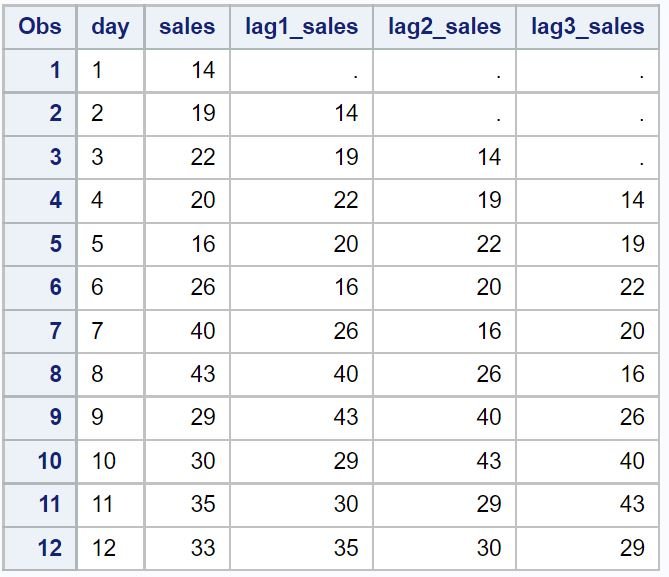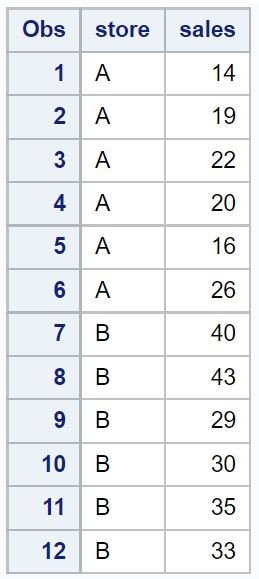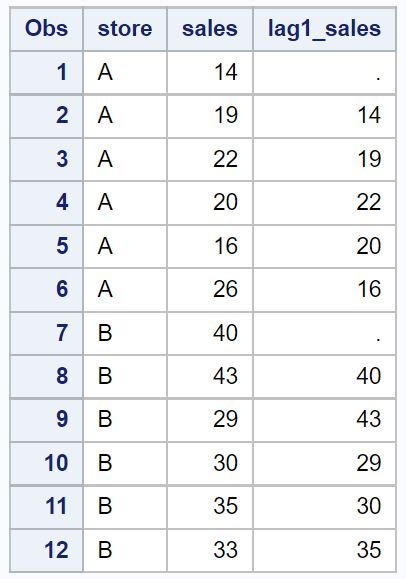You can use the LAG function in SAS to retrieve lagged values of some variable.
This function uses the following basic syntax:
lag1_value = lag(value);
By default, lag finds the previous value of some variable.
However, you can use lag2, lag3, lagn, etc. to calculate the 2-lagged, 3-lagged, n-lagged, etc. values of some variable.
The following examples show how to use the lag function in practice.
Example 1: Calculated Lagged Values for Some Variable
Suppose we have the following dataset in SAS that shows the total sales made by some store on consecutive days:
/*create dataset*/ data original_data; input day $ sales; datalines; 1 14 2 19 3 22 4 20 5 16 6 26 7 40 8 43 9 29 10 30 11 35 12 33 ; run; /*view dataset*/ proc print data=my_data;

The following code shows how to calculate the value for sales lagged by 1, 2, and 3 days:
/*create new dataset that shows lagged values of sales*/
data new_data;
set original_data;
lag1_sales = lag(sales);
lag2_sales = lag2(sales);
lag3_sales = lag3(sales);
run;
/*view new dataset*/
proc print data=new_data; 
The three new columns (lag1_sales, lag2_sales, lag3_sales) show the sales lagged by one, two, and three days, respectively.
Example 2: Calculated Lagged Values by Group
Suppose we have the following dataset in SAS that shows the total sales made by two stores during consecutive days:
/*create dataset*/
data original_data;
input store $ sales;
datalines;
A 14
A 19
A 22
A 20
A 16
A 26
B 40
B 43
B 29
B 30
B 35
B 33
;
run;
/*view dataset*/
proc print data=original_data; 
We can use the following code to calculate the 1-day lagged sales values by store:
/*create new dataset that shows lagged values of sales by store*/
data new_data;
set original_data;
by store;
lag1_sales = lag(sales);
if first.store then lag1_sales = .;
run;
/*view new dataset*/
proc print data=new_data; 
The values in the lag1_sales column show the 1-day lagged sales values for each store.
Notice that the value for lag1_sales in row 7 is empty because the 1-day lagged value for that row represents a sales value for a different store.
Additional Resources
The following tutorials explain how to perform other common tasks in SAS:
How to Normalize Data in SAS
How to Remove Duplicates in SAS
How to Replace Missing Values with Zero in SAS
